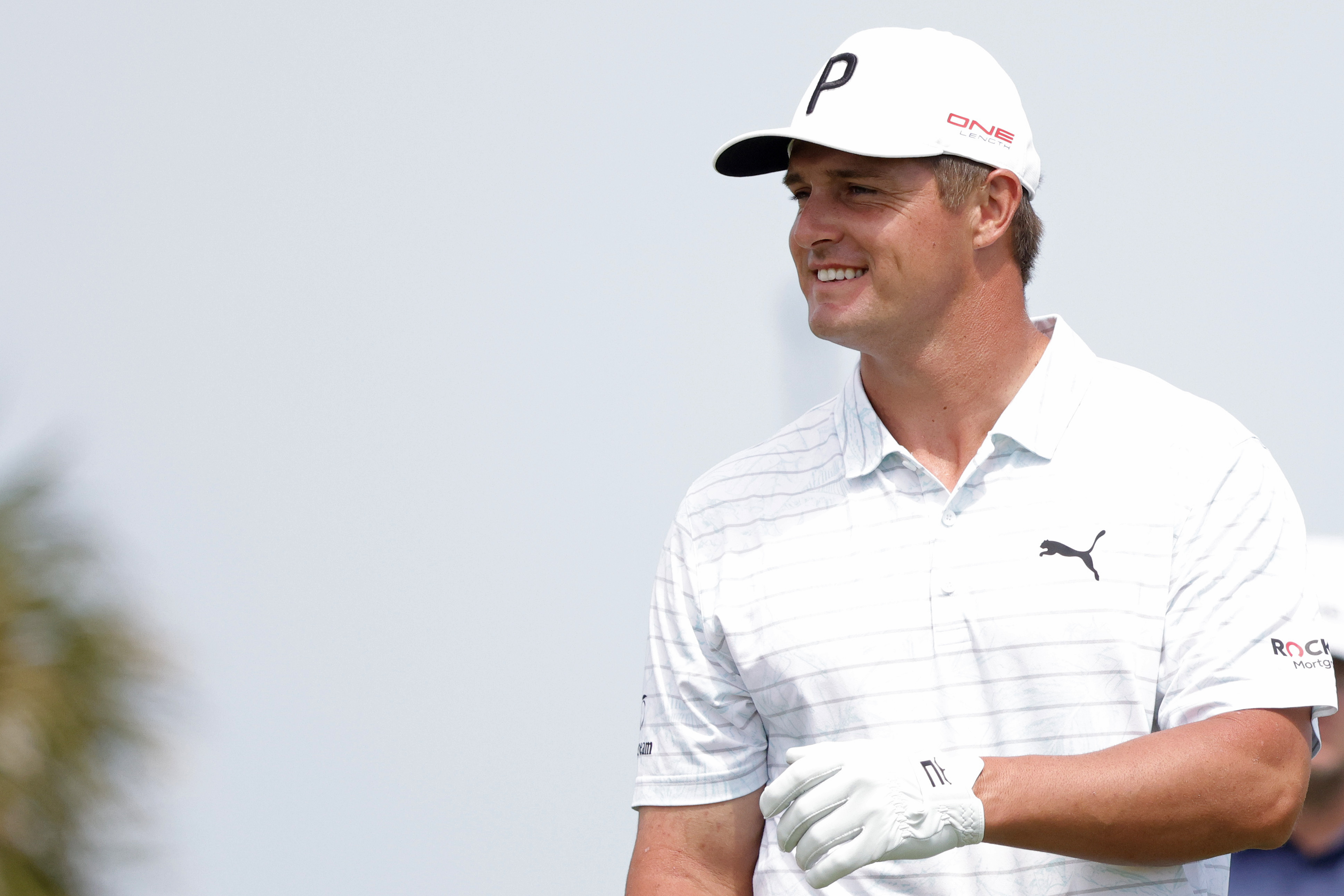KIAWAH ISLAND, S.C. – The Incredible Bulk meets the longest course in major championship history.
“This golf course is a beast,” said Bryson DeChambeau. “Hopefully I can unleash the beast.”
Pete Dye’s Ocean Course masterpiece at Kiawah Island Golf Resort measures in at 7,846 yards and when the wind blows, look out.
“It is probably one of the hardest golf courses I’ve ever played,” DeChambeau said.
The reigning U.S. Open champion is set to make his fifth appearance in the PGA Championship this week, and finished T-4 last year at TPC Harding Park, which at the time was his best finish at a major. During his pre-tournament press conference on Wednesday, DeChambeau expressed plenty of respect for a course that has forced him to take some head covers off for approaches to greens and, heavens to Betsy, a tee shot at a par 3.
PGA Championship: Tee times | Photos
“I have not had hybrids or 4-irons into par-3s since I’ve gotten longer,” he said. “That’s a new one.”
But if anyone can take advantage of his prodigious length this week, it could be DeChambeau, who leads the PGA Tour in driving distance at 322 yards. ESPN’s Andy North marveled at DeChambeau’s bold attempt to drive the par-5 sixth green at Bay Hill in March during the Arnold Palmer Invitational.
“No one else can hit it the places he can hit it right now,” said North, a two-time U.S. Open champion during his playing days. “Anybody watched Bay Hill, the couple of tee shots he hit at Bay Hill were the most ridiculous things I’ve ever seen. Unfortunately, our lines were 50 yards to the right of that, and it was still scary.”
Scary is to hear DeChambeau talk about throttling back and still belting a drive of 385 yards last week at the AT&T Byron Nelson. He abandoned his 4.5-degree Cobra driver in favor of a model that has three degrees more loft, a different face design and different weight. It more closely resembles a Cobra driver he used back in 2018 when he said he was driving it on a string until he broke the face.
“It’s not fully maxed out with everything, and there are reasons for that,” he explained. “You can’t let it loose out here. There’s certain golf courses like last week (at TPC Craig Ranch near Dallas) I could kind of let it loose a little bit, but even at that I was still trying to control ball flight. I’m still trying to gain speed. It’s not like I’m not. It’s just I’m trying to find more efficient ways to do it.”
For the first time since undergoing his physical transformation, DeChambeau has hit a wall in his pursuit of speed.
“I’m the strongest I’ve ever been, but it doesn’t produce swing speed, which is really interesting, so how to increase swing speed like you’re working out is something that nobody has ever really figured out,” he explained. “When quarantine came about I had time to physically transform everything. I took a couple weeks off of even playing golf or touching a golf club and literally changed my body. I don’t have that time now.”
And so while he continues down rabbit holes in search of answers on how to gain more distance, he’s content that his power game is an advantage at the Ocean Course – “If you don’t hit it long, it’s going to be a tough week,” he said – but it might not be his biggest one.
“If I can hit it straight this week in this wind and control the golf ball and control the flight of it, that’ll be my biggest advantage,” he said.
That may be a big ‘if.’ DeChambeau’s high ball flight isn’t ideal for Kiawah, where the fickle wind causes indecision in club selection and execution. DeChambeau, the Tour’s most analytical golfer, has been known to simulate the dew on a golf ball to try to understand how it affected spin rates on wedge shots. To no surprise, he was up to his usual tricks in trying to prep for wind conditions at the PGA.
“Man, you guys are going to eat this one up, but the laminar flow of the wind and how it works,” he said. “A lot of it is going to be dependent on luck this week. I will say that. When it’s dependent on luck you have to be patient.”
It should be great theater to see whether the World No. 5 can blast drivers and find the short grass and flight his irons into the wind and maintain his composure at what he calls one of the toughest courses he’s ever played. But he said he’s up to the challenge and wouldn’t have it any other way.
“I would say a few weeks a year is OK. That’s for sure,” he said. “This is one of those weeks.”

